The following is a transcript of the presentation video, edited for clarity.
Setting up a laboratory. I’m going to go through this pretty quickly.
Selecting and Training Students and Staff
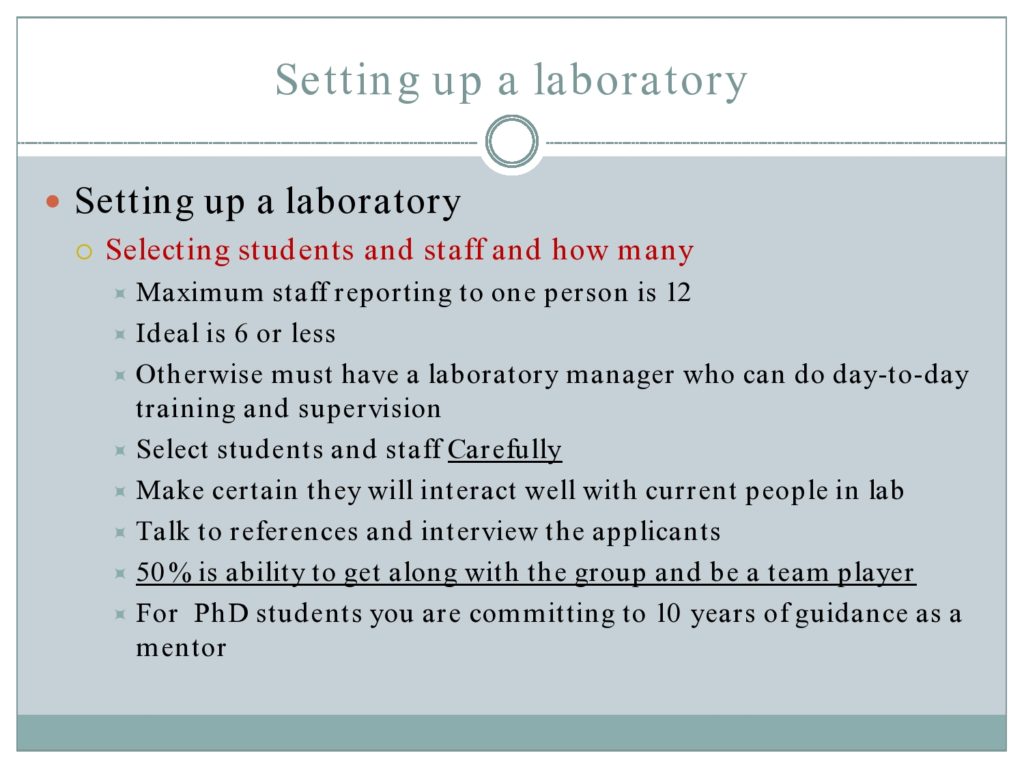
Selecting students and staff, how many?
You can have up to 12. Of course, for many people that’s a big number if you’re starting off in your own research lab. Ideally, you’ll have 6 or less. It’s hard to manage many more people than that. If you have a really large staff, you can spend an inordinate amount of your time dealing with staff management. It’s not just a matter of taking care of issues like giving them assignments. You also end up with the inevitable problems of illness and emotional problems and all the other things they might bring to you. Make sure you select individuals carefully, and be very, very careful that you identify people who can work within your group. It’s hard to get a gauge on that sometimes, but it can make a tremendous difference in the harmony and effectiveness of your research group.
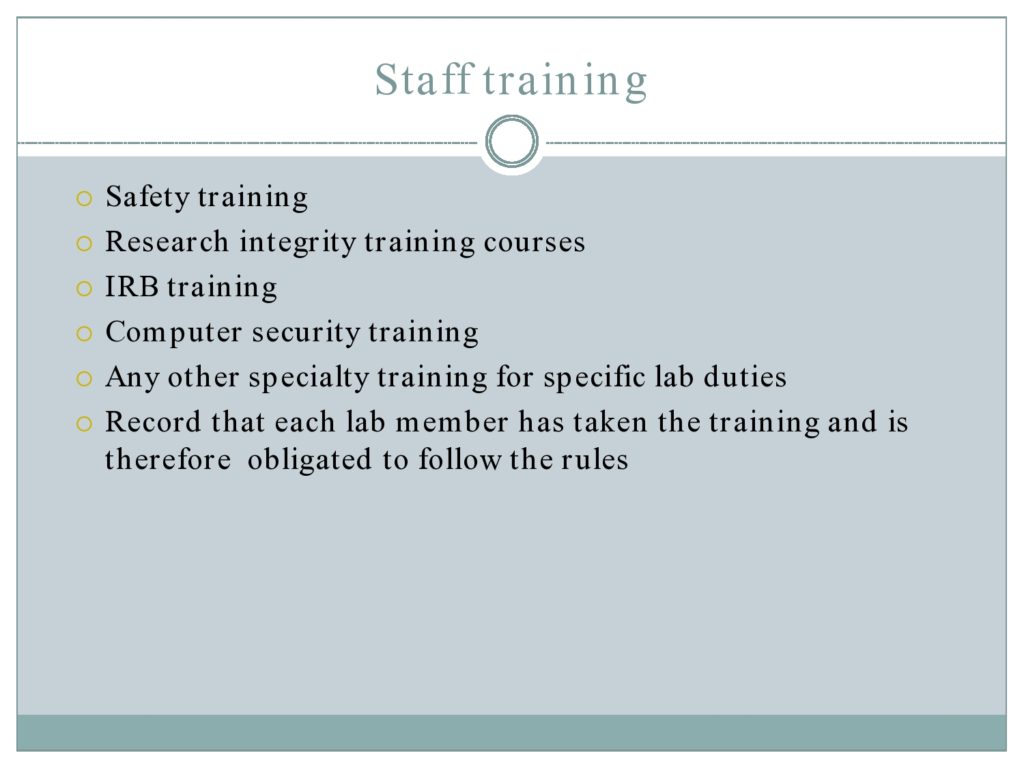
Safety training. As you develop your laboratory, make sure that you’ve given due consideration to safety training so people in your laboratory understand the importance of this. Make sure that they take the research integrity courses, that they’ve got IRB training, computer security training. And record that every member in your lab has taken the training. Make sure they understand. They should sign it, and you should sign it.
Maintaining Laboratory Records
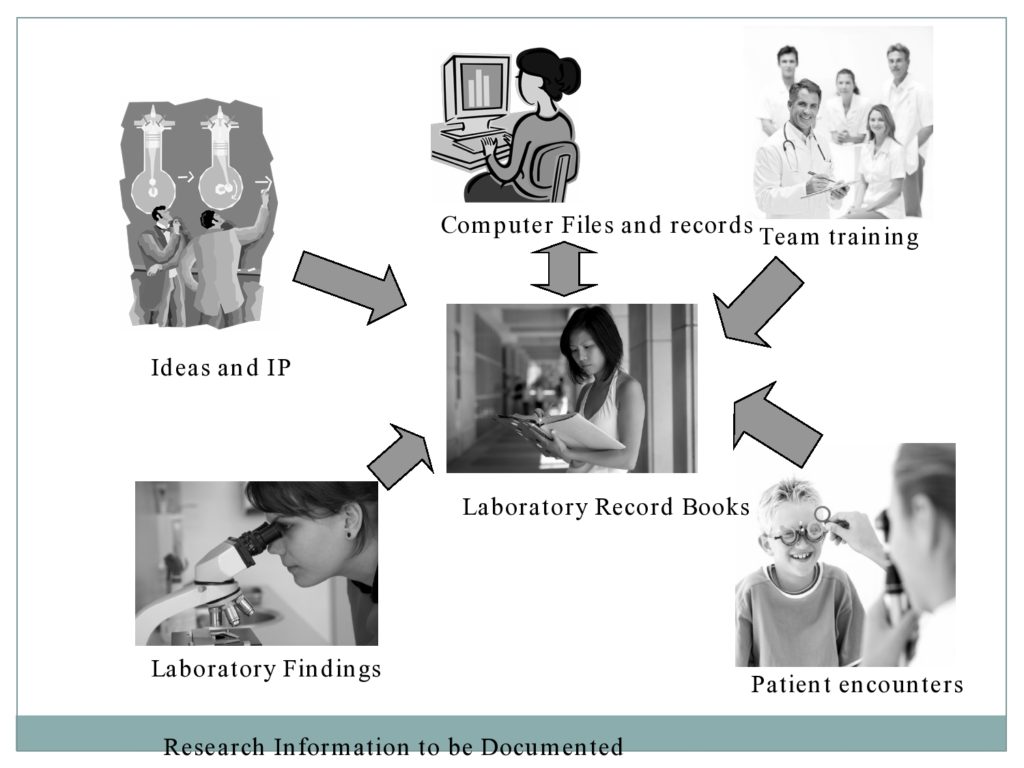
Very quickly, we’ll go through maintaining laboratory records. This slide simply indicates some of the challenges and issues that need to be considered in maintaining files. The ideas and intellectual property, laboratory findings, computer files and records, team training, patient encounters, all of these can be the grist for laboratory record books.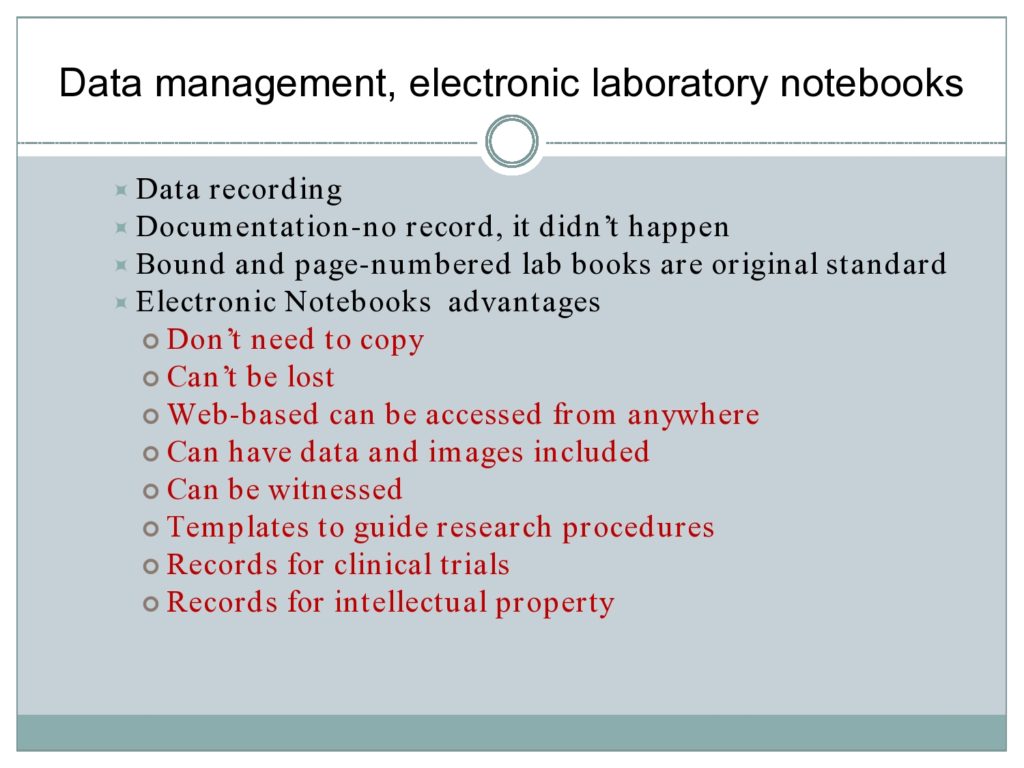
I grew up in the day when a laboratory book was, of course, a written book. You had something that you had to write in. These days we have other choices, and now we have data management through electronic laboratory notebooks. They provide data recording and documentation. If there’s no record, it didn’t happen. This is important to protect you against a number of things, including claims of scientific fraud. It can be very important if you ever seek a patent on something that you’re developing, and it can be a way of recording all the steps that lead to a particular discovery.
Electronic notebooks are being increasingly used in the laboratory sciences like chemistry, physics, and so forth. They have many advantages. You don’t need to copy them. They can’t be lost. They are web-based, so you can access them from anywhere through the cloud. You can have data and images included without doing cut-and-paste with old fashioned paste. They can be witnessed. You can have templates to guide research procedures. They can provide records for clinical trials, and records for intellectual property.
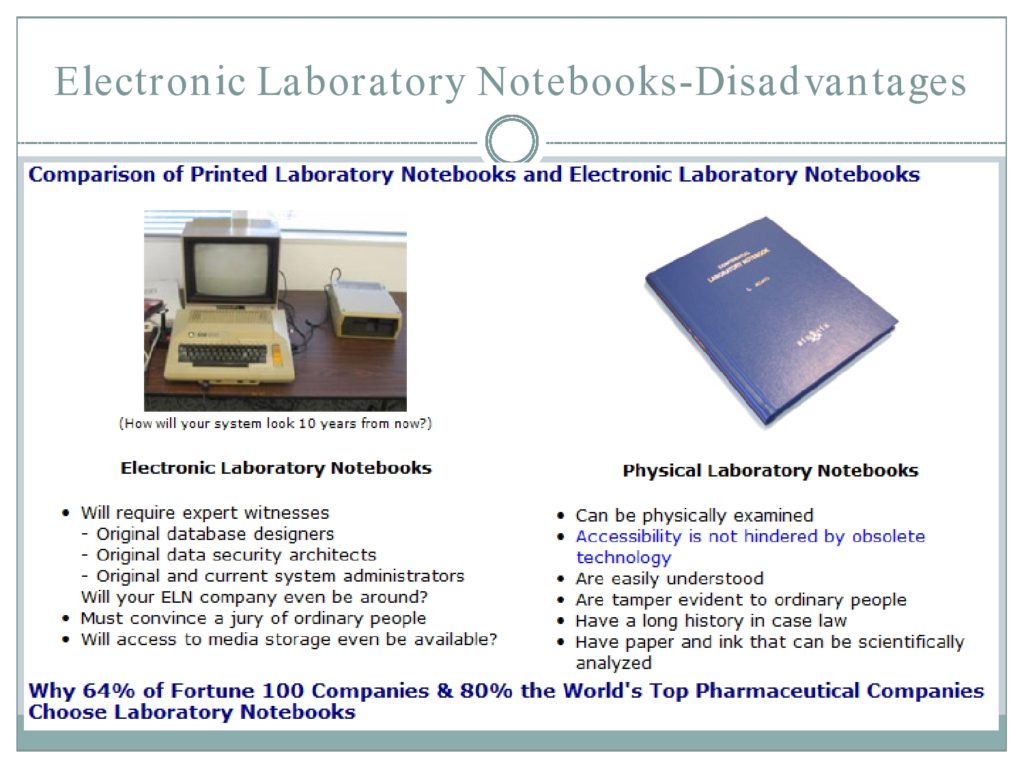
Some things to consider, however. Electronic laboratory notebooks might be a question because they don’t always satisfy some of the legal requirements to demonstrate that this was done by you at a certain time that you claimed — but that’s getting better. There are now much better ways of assuring that electronic laboratory notebooks will have the same legal status as physical laboratory notebooks. But this slide puts them one against the other, to make a decision about this. Probably in our field electronic notebooks are not as common. They’ve become increasingly common in many sciences, and I assume the same will be true for our field.
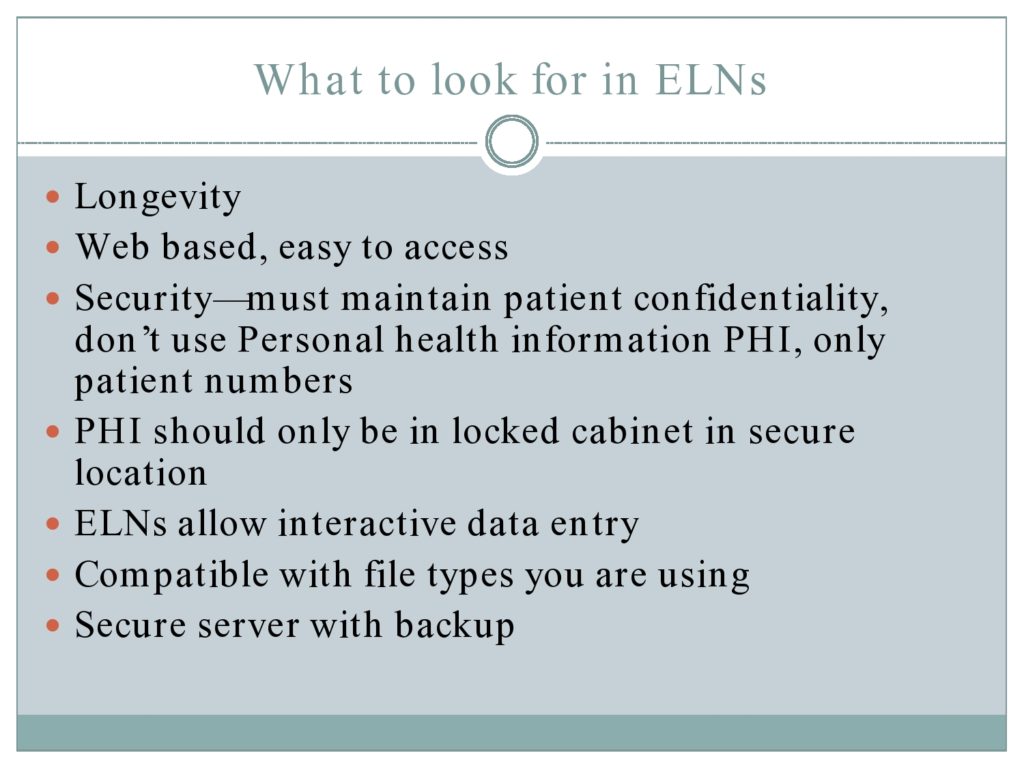
What to look for: These are some of the factors. Longevity, web-based and easy to access. Security: personal health information should only be in a locked cabinet in a secure location. They should allow interactive data entry, be compatible with file types you are using, and should be on a secure server with a backup.
This is very important. One of the things that’s happened is some companies who generated electronic laboratory notebooks went out of business. Zap. What does that mean with regard to what you develop? Some people thing the safest thing is to maintain not only the electronic laboratory notebook, but to print it out. Maintain a paper copy in case something happens.
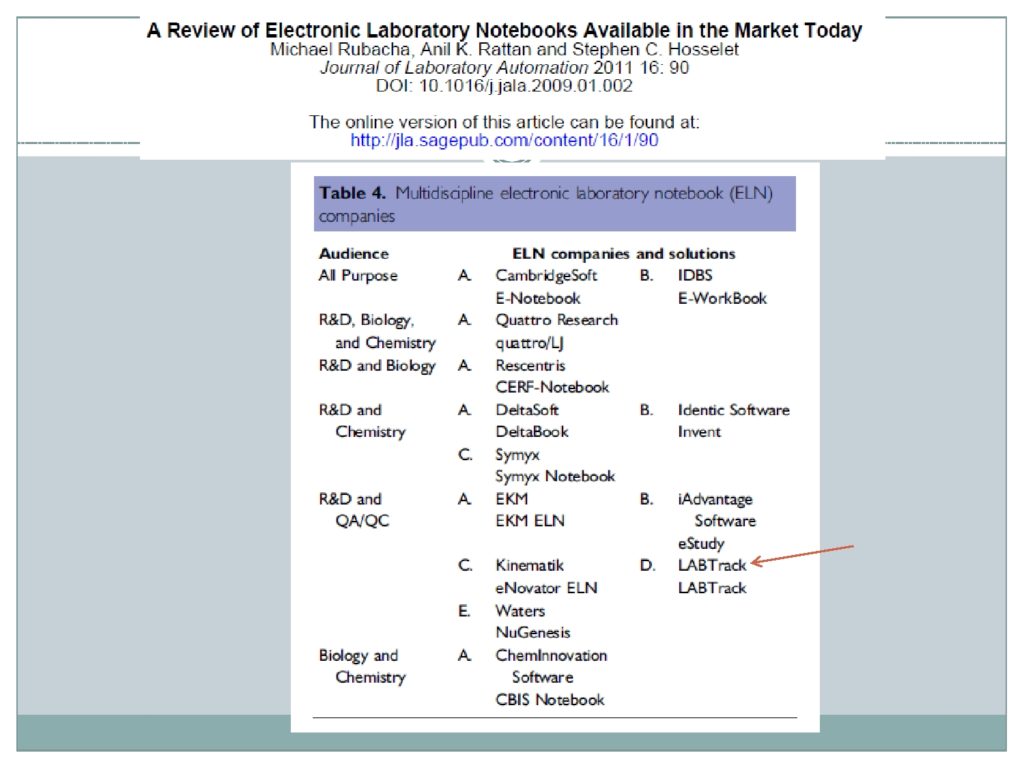
There is resource on this, which I will not go through right now — but this is a review of electronic laboratory notebooks available on the market today in the Journal of Laboratory Automation. If you begin to think about wanting an electronic laboratory notebook, this is a good source to look at. It’s a fairly rapidly changing field. It’s a good idea to talk to colleagues about it and see what else they can recommend.
Training New Students
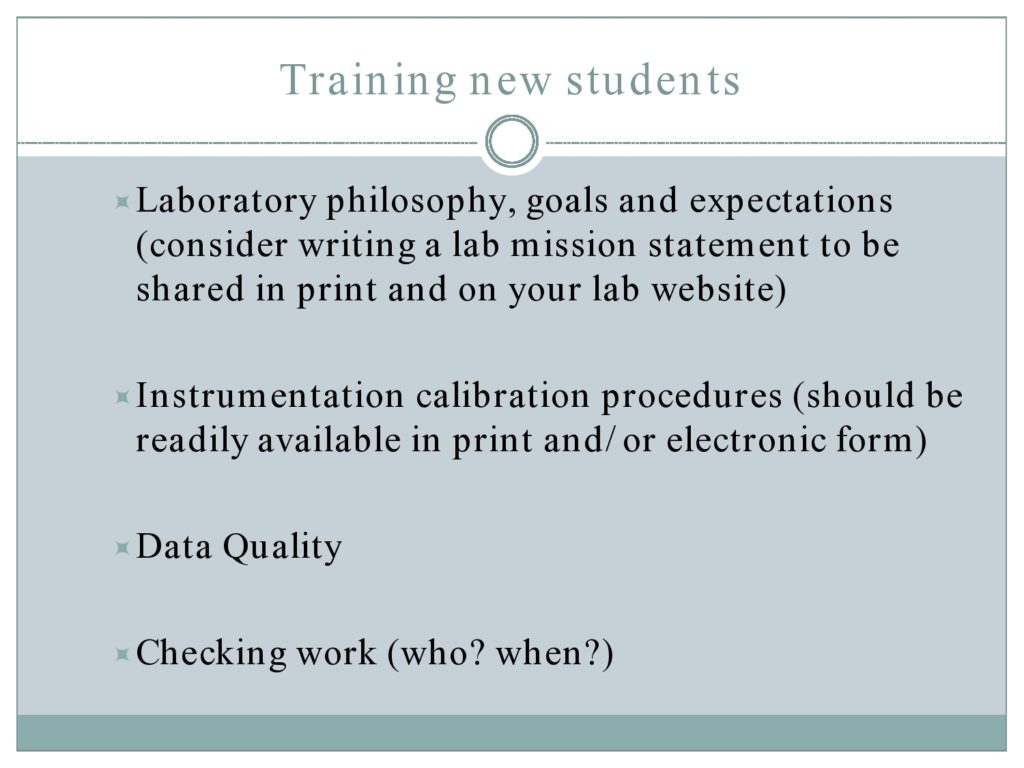
Training new students, make sure they are equipped with the laboratory philosophy, goals and expectations; Instrumentation calibration procedures; data quality; and checking work.
I found out too late in my career, it’s a really good thing to give to all of your students a laboratory mission statement, so they know what you’re about, what your expectations are, what kinds of things they should expect to do when they come in to your laboratory.





